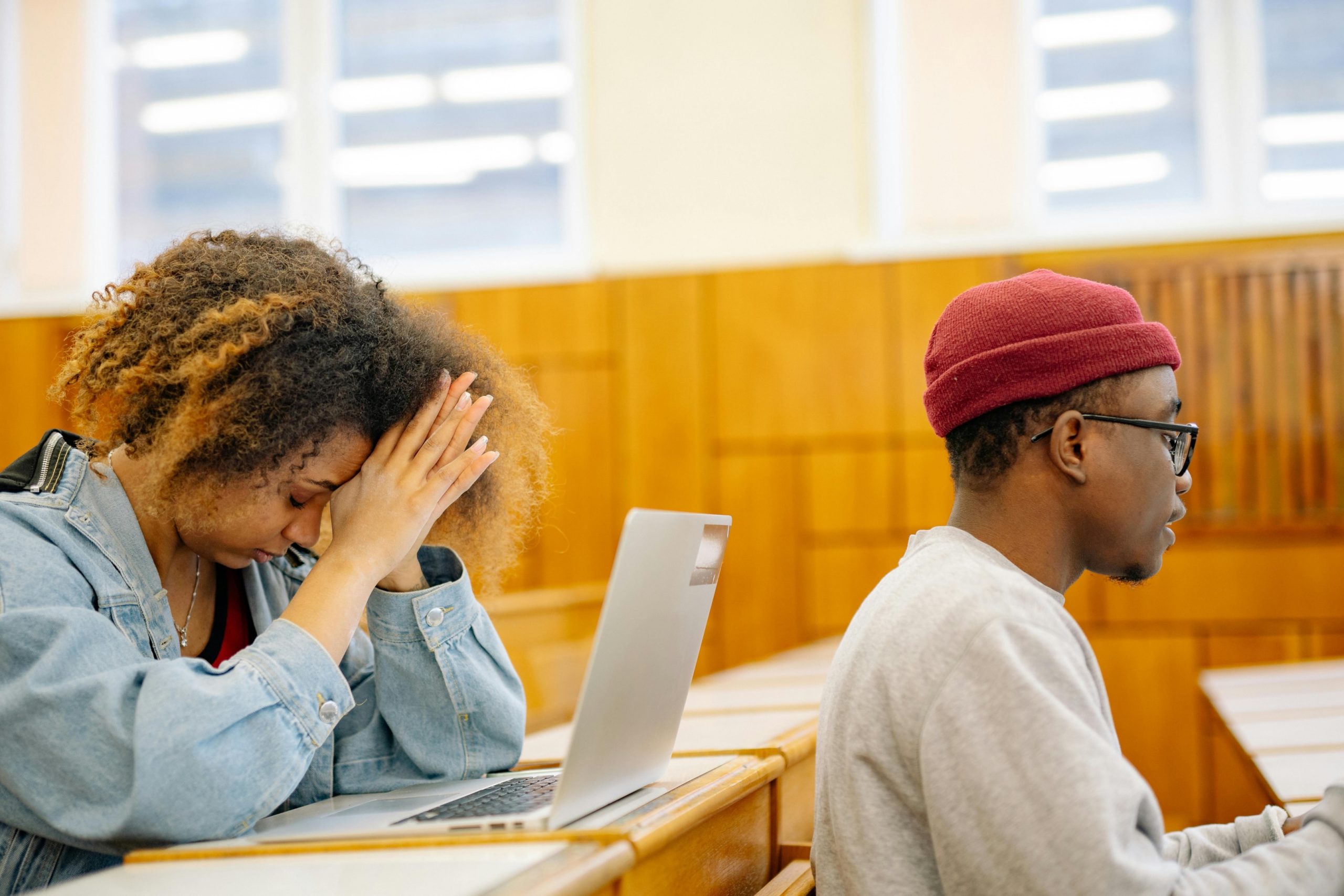Millions of students have the privilege of studying with the aid of AI tools today. If you’re one of them, this article is for you. By now, it’s harder to find someone who hasn’t played around with AI writing software like ChatGPT!
The rise of AI tools has raised as many questions as answers it has given us. ChatGPT can be incredibly useful for everyday answers and quick solutions, but how useful is it for writing essays and reports? Is ChatGPT plagiarism? Its place in the academic world still sits in somewhat of a gray area.
In this article, we’ll look into how ChatGPT works, what plagiarism is, and how to use AI writing tools responsibly.

Jul 31, 2024 • 7 min read
What Is ChatGPT?
ChatGPT is an AI language model created by OpenAI. It generates text based on the data it was trained on. This AI tool can write essays, answer questions, and even chat with you like a human.
ChatGPT uses machine learning to predict and generate text. This makes it a powerful AI content generator. Unlike simple chatbots, ChatGPT can understand and generate human language in specific contexts. This ability comes from its training data, which includes books, articles, and websites.
ChatGPT is a large language model that uses advanced AI technology. It’s part of a new generation of AI tools transforming content creation. AI language models like ChatGPT are designed to mimic human language patterns. This makes them effective in generating unique text based on prompts.

Does ChatGPT Plagiarize?
Chat GPT does not plagiarize in the traditional sense. It doesn’t copy and paste existing content. Instead, it generates new text based on patterns it learned from a large dataset. However, it can produce text that is very similar to existing content. This can be problematic for students who rely solely on ChatGPT to write their essays.
ChatGPT’s responses are generated based on probabilities of word sequences. For example, if asked about the American Civil War, it may generate text similar to existing essays. This happens because it was trained on many texts about that topic.
ChatGPT uses training data to generate text, but it does not directly copy anyone else’s work. It’s important to understand that ChatGPT-generated content is unique but can sometimes resemble someone else’s work. This happens because it was trained on a lot of data, including books, articles, and websites.
ChatGPT is designed to produce original text, but it is not perfect! To ensure content generated by ChatGPT is plagiarism-free, always go through the AI-generated text yourself and try to humanize it and, most importantly, use plagiarism detection tools. These tools can help detect any similarities between the generated content and existing works.

Using Plagiarism Detection Software
The good news is that there are plenty of tools available to check if ChatGPT’s output is plagiarized. These tools scan your text and compare it to a large database of existing works.
Usually, AI detection software tools will give you a percentage score of similarity to existing texts. Let’s take a further look at what plagiarism checkers do, as well as some of the more popular tools available.
What Is a Plagiarism Checker?
A plagiarism checker is a tool that helps you see if your work is original. It compares your text to other texts in its database. This can help you avoid using someone else’s work without proper attribution.
Using reliable plagiarism detection tools is essential in the digital age. These tools help maintain academic integrity by ensuring content is original. Plagiarism detection tools compare text to existing content and highlight similarities. This helps users avoid unintended plagiarism and properly attribute sources.
Using plagiarism detection software ensures your work is original. Tools like Turnitin, Scribbr, and Grammarly are valuable for checking text against a vast database of existing works. By using these tools, you can confidently create plagiarism-free content and ensure your professor doesn’t detect the AI.
Best Plagiarism Checkers
Finding the best plagiarism checker is crucial for ensuring your work is original. If you’re writing an academic paper, it might even be worthwhile running your work through multiple checkers. Tools like Copyleaks are a great free option. Here are some of the top options to check your work isn’t plagiarized.
1. Turnitin
Turnitin is widely used by schools and universities. It has a large database of sources and is accurate at detecting both direct copies and paraphrasing. It is considered one of the best plagiarism checkers for academic integrity.
2. Scribbr
Scribbr’s plagiarism checker is known for its accuracy and comprehensive database. It can detect plagiarism in both direct copies and heavily edited texts. It is a reliable plagiarism checker for thorough checks.
Scribbr is also one of the best AI content detection tools for teachers and it is widely used to check students’ work for AI.
3. Grammarly
Grammarly is a popular all-in-one writing tool that includes a plagiarism checker. It’s not as comprehensive as Scribbr but is a good option for a basic plagiarism check. Grammarly also helps improve grammar and style.
By using proper plagiarism detection tools, you can ensure you hand in work that is plagiarism-free.
Keep in mind that AI checker tools can help detect plagiarism. However, these tools are not perfect — they might still miss some AI-generated content or incorrectly flag human-written text. Subtle traces of AI-generated text can be left behind.
For best results, consider using an AI content remover to catch and refine remaining AI-detected sections. Always review and revise the output yourself. Rephrase, paraphrase, and personalize the content as much as possible to ensure it sounds natural and uniquely yours.
Best Practices for Using ChatGPT
Is AI content plagiarism-free? When using ChatGPT there are certain things to keep in mind, such as:
- Use it as a research tool: Let ChatGPT help you gather ideas and information.
- Don’t copy and paste: Always rewrite the generated content in your own words.
- Check for plagiarism: Use a reliable plagiarism checker to ensure originality and remove AI plagiarism if required.
- Give credit: If you use ideas from ChatGPT, acknowledge them in your work.

Ensure Your Writing Is Original With Smodin
There is no denying that ChatGPT is a powerful AI language model that can help with writing and generating ideas. However, it’s crucial to use it responsibly to avoid plagiarism. This means understanding that while ChatGPT doesn’t copy and paste text, it can produce content similar to existing sources.
If you’re looking for reliable writing support, Smodin AI Chat is a smart alternative. Like ChatGPT, it uses the same advanced language models, but it goes a step further by prioritizing accuracy and originality. Smodin delivers plagiarism-free results, so you can write with confidence, without the extra step of constant fact-checking.
To ensure your content is original, always check your work with a plagiarism checker. Plagiarism detection tools like Smodin’s Plagiarism Checker can scan your text against vast databases of existing works. This process helps detect any unintentional similarities and allows you to revise your text accordingly.
For an added layer of control and protection, try Smodin’s AI Content Remover. This tool highlights AI-generated content. This allows you to easily identify flagged sections and revise or rewrite them for improved accuracy and clarity. It also helps improve your grammar, sentence structure, and overall writing style to ensure that your final output is truly yours.
Responsible use of AI tools can improve your writing and research without compromising originality. If you are now feeling ready to enhance your writing skills, try Smodin’s AI. This writing tool will create original, high-quality content with ease! Check out Smodin now and transform your writing!

FAQs
Can ChatGPT give the same answer to different users?
ChatGPT’s responses can vary based on the input. Two users asking the same question might get different answers.
Is using ChatGPT considered plagiarism?
Using ChatGPT isn’t plagiarism if you properly attribute the AI tool and create unique content.
How can I avoid ChatGPT plagiarism?
Use ChatGPT as a guide, not a source to copy from. Always check your work with a plagiarism checker.
What are some good plagiarism detection tools?
Turnitin, Grammarly, and Scribbr are reliable plagiarism detection tools.
Can teachers detect if my work was generated by ChatGPT?
Yes, with AI detection tools becoming more advanced, it’s possible for teachers to identify AI-generated content.


 AI
Plagiarism Checker
AI
Plagiarism Checker
 AI
Content Detection Remover
AI
Content Detection Remover
